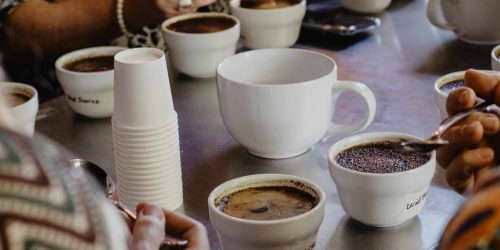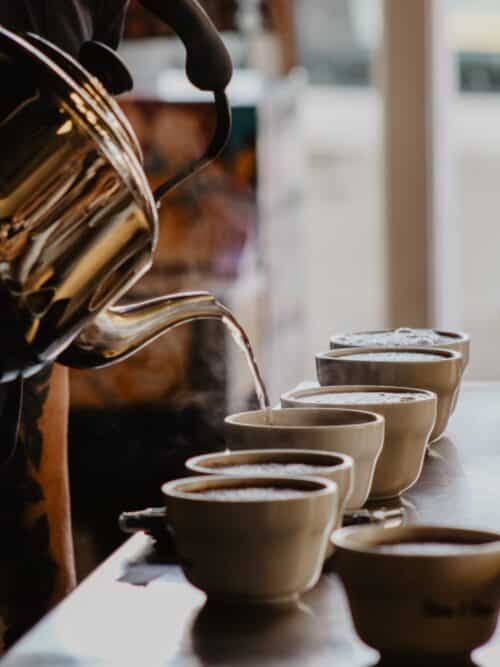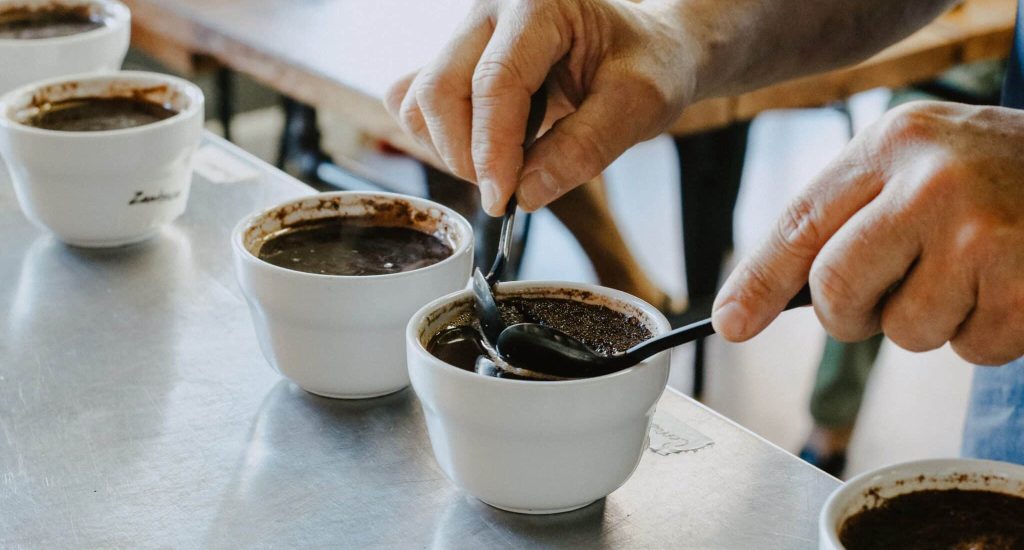Coffee cupping is a method professionals and enthusiasts use to evaluate and analyze the characteristics of different coffee beans. Cupping sessions are typically conducted in a controlled environment, following a specific protocol to ensure consistency. This protocol gives the opportunity for the taster to assess the aroma, taste, body, and overall quality of the coffee.
In the following, we give you our guide to a step-by-step coffee cupping process. The following coffee cupping process is for 150 ml cups, you can always adjust the amounts according to the cup size you want to use:
Before you start a cupping, there are some materials you need:

When you start evaluating the different coffees, you should do that in the “blind”. Anything you know about coffee and your previous experience will influence your perception of the coffee. One way to do that is to give each coffee a number (sample codes). Avoid putting any kind of bean or coffee bags on the table, because it can influence the judgment of the coffee you are about to experience.

Before the cupping session, evaluate the roast of the coffee beans visually to identify any inconsistencies or defects. Some physical inconsistencies or defects could be insect damage, mold, inconsistent roast, or broken beans. Defective beans can affect the flavor and aroma of the coffee.
If you want to check how much water each cup holds, then place the cup on the scale (without the coffee) and fill the water to check how much it holds

Coffee cupping allows you to objectively evaluate various coffees and make informed decisions regarding sourcing, blending, and quality control